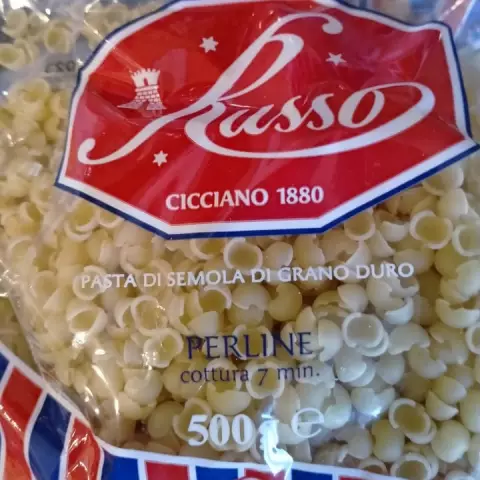- Author Rachel Wainwright [email protected].
- Public 2023-12-15 07:39.
- Last modified 2025-11-02 20:14.
Tritace
Instructions for use:
- 1. Pharmacological action
- 2. Release form
- 3. Analogs
- 4. Indications for use
- 5. Method of application
- 6. Contraindications
- 7. Side effects
- 8. Storage conditions
Prices in online pharmacies:
from 735 rub.
Buy
Tritase (tritase) - antihypertensive drug, inhibitor of angiotensin-converting enzyme.
Pharmacological action of Tritace

The active substance of Tritace - ramipril, when administered orally, leads to a decrease in the formation of angiotensin II, the accumulation of bradykinin, which causes vasodilation and a decrease in blood pressure. Ramipril has a cardioprotective and endothelioprotective effect, increases the synthesis of prostaglandins, increases the serum concentration of potassium ions, reduces the secretion of aldosterone, the risk of developing nephropathy and the occurrence of microalbuminuria.
Tritace release form
Tritace is produced as oblong tablets with a dividing line:
- Light yellow with engraving "2.5h" on one side and "2.5 / HMR" on the other side in blisters of 14 pcs. in cardboard boxes, which contain 2.5 mg of ramipril per 1 tablet;
- Light pink in color with rare splashes of lighter and darker shades with engraving "5h" on one side and "5HMP" on the other side in blisters of 14 pcs. in cardboard boxes, which contain 5 mg of ramipril per 1 tablet;
- White or almost white with "HMO / HMO" engraving on one side in blisters of 14 pcs. in cardboard packs, which contain 10 mg of ramipril per 1 tablet.
Tritace's analogs
Tritace's analogs for the active substance are:
- Amprilan;
- Vasolong;
- Dilaprel;
- Pyramil;
- Ramigamma;
- Hartil.
By the mechanism of action and belonging to the same pharmacological group, the analogs of Tritace include:
- Angiopril-25;
- Blockordil;
- Vero-Captopril;
- Golten;
- Dapril;
- Zonixem;
- Inhibase;
- Kapoten;
- Leeten;
- Moeks 15;
- Prenessa;
- Renitek.
Indications for Tritace's use
In accordance with the instructions, Tritace is prescribed for:
- Essential hypertension;
- Combined therapy of chronic heart failure (in combination with diuretics);
- Diabetic or non-diabetic nephropathy;
- Confirmed coronary artery disease;
- Occlusive lesions of the peripheral arteries;
- Diabetes mellitus with additional risk factors;
- Heart failure that develops within the first few days after acute myocardial infarction.
Method of using Tritace
In accordance with the instructions, Tritace is taken orally, regardless of the meal, with plenty of water. The duration of treatment and dosage depend on the disease and are prescribed by the doctor individually.
Contraindications
According to the Tritace instructions, it is contraindicated to use when:
- Angioneurotic edema;
- Hemodynamically significant stenosis of the renal arteries, aortic or mitral valves;
- Arterial hypotension and conditions;
- Unstable hemodynamic parameters;
- Hemodialysis;
- Obstructive hypertrophic cardiomyopathy;
- Primary hyperaldosteronism;
- Severe renal failure;
- Pregnancy and lactation;
- Nephropathy;
- Chronic heart failure in the stage of decompensation;
- Low density lipoprotein apheresis;
- Hyposensitizing therapy;
- Hypersensitivity to the components of Tritace tablets;
- Acute stage of myocardial infarction (severe heart failure, unstable angina, cardiac arrhythmias and cor pulmonale).
Also, according to the instructions, Tritace is prescribed with caution in the case of:
- A condition in which a decrease in blood pressure is especially dangerous;
- Conditions accompanied by an increase in the activity of the hormonal system;
- Previous intake of diuretics;
- Violations of water and electrolyte balance;
- Liver dysfunction;
- Liver cirrhosis, accompanied by edema and ascites;
- Kidney transplant;
- Systemic connective tissue diseases;
- Diabetes mellitus;
- Hyperkalemia.

The drug is not intended for use in children under the age of 18 and is prescribed with caution to the elderly.
Side effects of Tritace
The use of Tritace according to reviews can lead to complications from various body systems in cases of overdose. On the part of the organs of vision, Tritace, according to reviews, most often causes conjunctivitis and visual disturbances, of the hearing organs - ringing in the ears or hearing impairment. In addition, drug overdose can cause other disorders, namely:
- Cardiovascular system (decreased blood pressure, orthostatic hypotension, syncope, myocardial ischemia, tachycardia, arrhythmia, peripheral edema, vasculitis, Raynaud's syndrome, circulatory and palpitations);
- Central nervous system (headache, dizziness, ageusia, dysgeusia, depressed mood, anxiety, nervousness, sleep disturbances, attention and psychomotor reactions, tremors, cerebral ischemia, paresthesia and parosmia);
- Respiratory system (dry cough, bronchitis, shortness of breath, sinusitis, bronchospasm, and nasal congestion);
- Digestive system (inflammation of the stomach and intestines, dryness of the oral mucosa, indigestion, dyspepsia, diarrhea, nausea, vomiting, pancreatitis, gastritis, abdominal pain, constipation, glossitis, aphthous stomatitis);
- Hepatobiliary system (increased concentration of conjugated bilirubin in blood plasma and activity of liver enzymes, cholestatic jaundice, hepatocellular lesions, acute liver failure, cytolytic and cholestatic hepatitis);
- Kidney and urinary tract (impaired renal function and renal failure, increased urinary excretion, increased proteinuria, increased concentration of urea and creatinine in the blood);
- Breast and reproductive system (impotence, decreased libido and gynecomastia);
- Hematopoietic systems (eosinophilia, leukopenia, decreased hemoglobin concentration and the number of erythrocytes in peripheral blood, thrombocytopenia, inhibition of bone marrow hematopoiesis and hemolytic anemia);
- Mucous membranes and skin (skin rash, angioedema, pruritus, hyperhidrosis, exfoliative dermatitis, urticaria, onycholysis, photosensitivity reaction, Steven-Johnson syndrome, psoriasis-like dermatitis, toxic epidermal necrolysis, pemphigus, multiforme erythema, alopecia areata and lichenoid exatema or enanthem);
- Musculoskeletal system (muscle cramps, myalgia, arthralgia, abnormalities in laboratory parameters, nutrition and metabolism, an increase in the concentration of potassium in the blood, anorexia, decreased appetite and sodium concentration in the blood);
- Immune system (anaphylactoid and anaphylactic reactions, increased concentration of antinuclear antibodies).
Also, the use of Tritace according to reviews can lead to chest pain, fatigue, fever and asthenia.
Storage conditions
In accordance with the instructions, Tritace must be stored out of the reach of children at room temperature up to 25 ° C. The shelf life of the medication is 5 years.
Tritace: prices in online pharmacies
|
Drug name Price Pharmacy |
|
Tritace 10 mg tablets 28 pcs. 735 RUB Buy |
|
Tritace 5 mg tablets 28 pcs. 828 RUB Buy |
|
Tritace tablets 5mg 28 pcs. RUB 924 Buy |
|
Tritace tablets 10mg 28 pcs. 1140 RUB Buy |
Information about the drug is generalized, provided for informational purposes only and does not replace the official instructions. Self-medication is hazardous to health!






